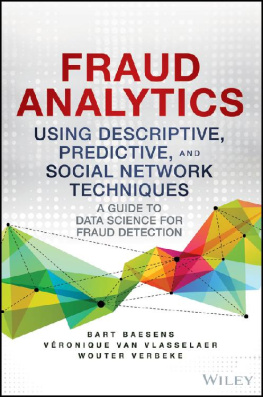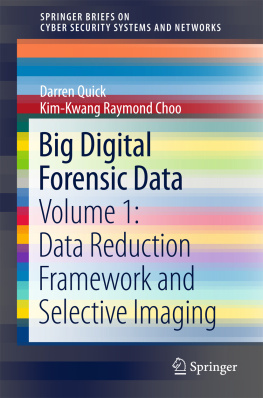Copyright by Mark J. Nigrini. All rights reserved.
Published by John Wiley & Sons, Inc., Hoboken, New Jersey.
Published simultaneously in Canada.
No part of this publication may be reproduced, stored in a retrieval system, or transmitted in any form or by any means, electronic, mechanical, photocopying, recording, scanning, or otherwise, except as permitted under Section 107 or 108 of the 1976 United States Copyright Act, without either the prior written permission of the Publisher, or authorization through payment of the appropriate per-copy fee to the Copyright Clearance Center, Inc., 222 Rosewood Drive, Danvers, MA 01923, (978) 750-8400, fax (978) 646-8600, or on the Web at www.copyright.com . Requests to the Publisher for permission should be addressed to the Permissions Department, John Wiley & Sons, Inc., 111 River Street, Hoboken, NJ 07030, (201) 748-6011, fax (201) 748-6008, or online at http://www.wiley.com/go/permissions .
Limit of Liability/Disclaimer of Warranty: While the publisher and author have used their best efforts in preparing this book, they make no representations or warranties with respect to the accuracy or completeness of the contents of this book and specifically disclaim any implied warranties of merchantability or fitness for a particular purpose. No warranty may be created or extended by sales representatives or written sales materials. The advice and strategies contained herein may not be suitable for your situation. You should consult with a professional where appropriate. Neither the publisher nor author shall be liable for any loss of profit or any other commercial damages, including but not limited to special, incidental, consequential, or other damages.
Wiley and the Wiley logo are trademarks or registered trademarks of John Wiley & Sons, Inc. and/or its affiliates, in the United States and other countries, and may not be used without written permission. All other trademarks are the property of their respective owners. Wiley Publishing, Inc. is not associated with any product or vendor mentioned in this book.
For general information on our other products and services or for technical support, please contact our Customer Care Department within the United States at (800) 762-2974, outside the United States at (317) 572-3993 or fax (317) 572-4002.
Wiley also publishes its books in a variety of electronic formats. Some content that appears in print may not be available in electronic books. For more information about Wiley products, visit our web site at www.wiley.com .
ISBN 978-0-470-89046-2; ISBN 978-1-1180-8763-3 (ebk); ISBN 978-1-1180-8766-4 (ebk); ISBN 978-1-1180-8768-8 (ebk)
To my daughter, Paige Nigrini.
Thank you for understanding that the book
needed many late nights and weekend afternoons.
Preface
The business of occupational and financial statement fraud is unfortunately alive and doing very well. There are regular reports of financial statement fraud in the financial press, and all types of financial fraud in the press releases section of the SEC's website. There are also regular reports of occupational fraud in the financial press. These reports might just be the tip of the iceberg. The 2010 Report to the Nations on Occupational Fraud and Abuse of the Association of Certified Fraud Examiners estimates that the typical organization loses 5 percent of its annual revenue to fraud. These statistics are confirmed in other fraud surveys such as The Global Economic Crime Survey of PriceWaterhourseCoopers (2009) and in reports published by the U.S. Government Accountability Office. Together with the losses from employee fraud, there are also other corporate and public sector losses from accounting errors such as underbilling or overpaying or duplicate payments.
Forensic analytics describes the act of obtaining and analyzing electronic data using formulas and statistical techniques to reconstruct, detect, or otherwise support a claim of financial fraud. In this book, forensic analytics is also used to detect accounting errors such as underbilling or overpayments. Forensic analytics also includes the detection of biases that come about when people aim for specific numbers or number ranges to circumvent actual or perceived internal control thresholds. The use of forensic analytics has been made easier with the continued increase in computing power available on laptop computers and access to inexpensive software capable of some rigorous data analysis on large data tables. The main steps in forensic analytics are (a) data collection, (b) data preparation, (c) the use of forensic analytics, and (d) evaluation, investigation, and reporting. The availability of computing power and the use of the Internet for many facets of forensic analytics have made all the steps in the process easier. All that is missing now is for forensic investigators, internal auditors, external auditors, and other data analysts to use the methods and techniques on their data.
The first three chapters in the book are an overview of using Microsoft Access, Excel, and PowerPoint for the analysis of data and the reporting of the forensic results. The next nine chapters describe forensic analytic methods and techniques that begin with high-level overviews and then drill deeper and deeper into the data to produce small sets of suspicious transactions. One high-level overview technique reviewed in depth is Benford's Law. Thereafter, two chapters show how correlation and time-series analysis can be used as detective or proactive continuous monitoring techniques. Chapters 15 and 16 discuss, with examples, a forensic risk-scoring technique that would work well in a continuous monitoring application. Chapter 17 reviews the detection of financial statement fraud. The chapter shows how Benford's Law can be used to detect such frauds and also includes a scoring technique to score divisions for financial reporting fraud. The final chapter reviews the use of forensic analytics to detect purchasing card fraud and possible waste and abuse in a purchasing card environment.
The methods and techniques in the book are discussed and described with results from real-world data. The chapters also include a detailed demonstration of how to run the tests in Access 2007 and Excel 2007. These demonstrations are supported by about 300 screen shots showing the steps used to run the tests. In a few cases, either Access or Excel is demonstrated when that alternative is clearly the way to go. Forensic investigators should have no problem in running these tests in Access 2010 or Excel 2010 using the screenshots in the book.
The companion site for the book is www.nigrini.com/ForensicAnalytics.htm . The website includes the data tables used in the book. Users can then run the tests on the same data and can then check their results against the results shown in the book. The website also includes Excel templates that will make your results exactly match the results in the book. One template is the NigriniCycle.xlsx template for all the tests in the Nigrini cycle. The templates were prepared in Excel 2007. The companion site also includes PowerPoint 2007 slides for all 18 chapters. The website also has exercises and problems typical of those found at the end of college textbook chapters. These materials could be used by college professors using the book in a formal college course. With time, more sections will be added to the website and these might include links to useful resources and questions from forensic investigators and my answers to the end-of-chapter questions.
Forensic Analytics is the result of many years of work on forensic analytic projects, starting with my Ph.D. dissertation titled The Detection of Income Tax Evasion through an Analysis of Digital Distributions. The book was written so that it would be understood by most financial professionals. Ideally, most users will have some experience in obtaining transactional data and some experience with the basic concepts of data analysis, such as working with tables, combining (appending) or selecting (extracting subsets) data, and performing calculations across rows or down columns. Users should understand the basics of either Excel or Access. There are many books covering these basics and also many free resources on the Microsoft website. In addition to the technical skills, the ideal user should have enough creativity and innovation to use the methods as described, or to add twists and tweaks to take into account some distinctive features of their environment. Besides innovation and creativity, the target user will also have a positive attitude and the disposition to, at times, accept that their past few hours of work have all been the equivalent of barking up the wrong tree and after taking a deep breath (and a few minutes to document what was done) to go back (perhaps with new data) and start again. Much of forensic analytics is more like an art than a science and forensic investigators need a personality that matches the iterative process of modifying and refining the tests.


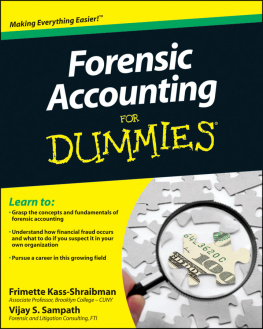
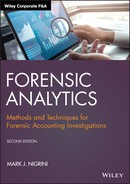
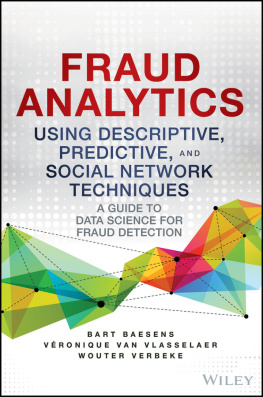
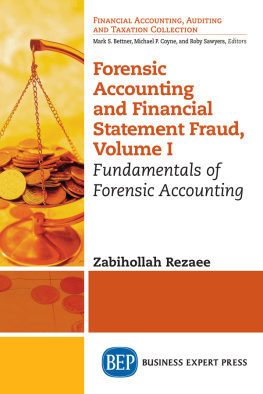
![Bart Baesens [Bart Baesens] - Analytics in a Big Data World: The Essential Guide to Data Science and its Applications](/uploads/posts/book/119608/thumbs/bart-baesens-bart-baesens-analytics-in-a-big.jpg)
